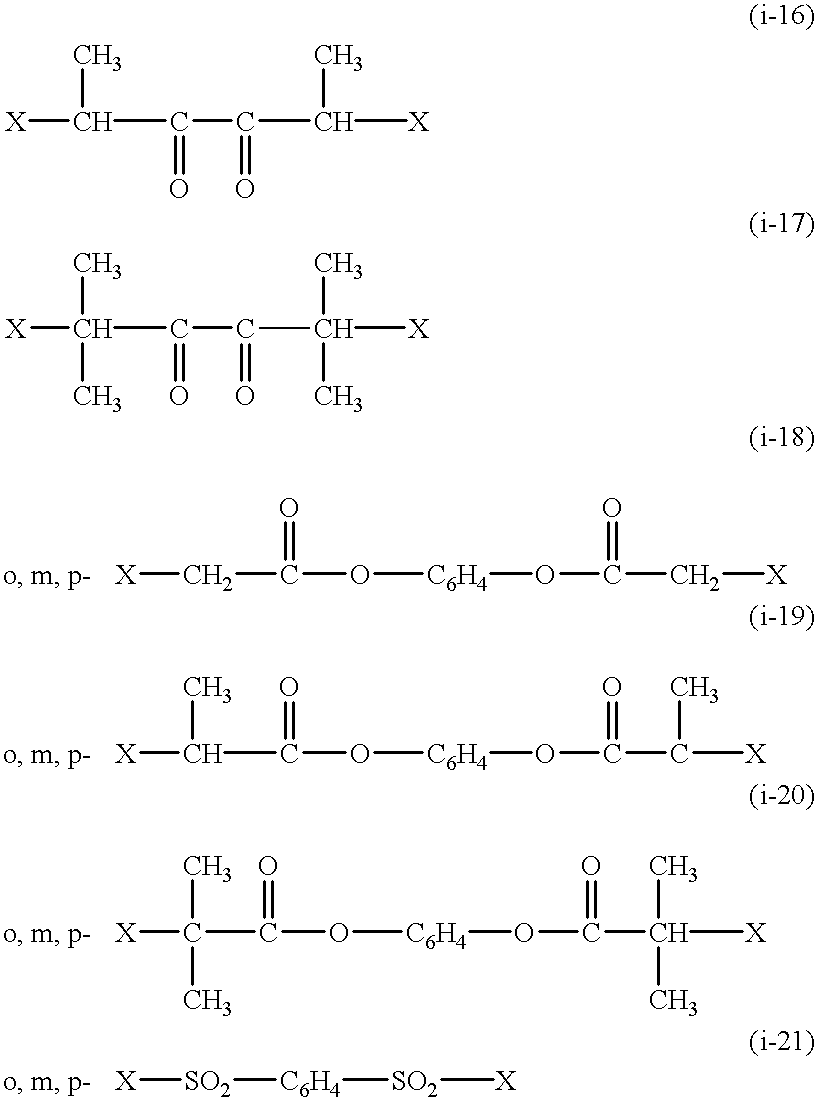Functional groups-terminated vinyl polymers
- Summary
- Abstract
- Description
- Claims
- Application Information
AI Technical Summary
Problems solved by technology
Method used
Image
Examples
production example 1
Production of 2-allyloxyethyl methacrylate
A three-necked flask equipped with stirrer, thermometer, reflux condenser and Dean-Stark trap is charged with methacrylic acid (137.7 g, 1.6 mol), ethylene glycol monoallyl ether (80.7 g, 0.8 mol), p-toluenesulfonic acid (0.76 g, 4.0 mmol) and toluene (650 mL). After allowing the reaction to proceed at 120.degree. C. for 5 hours, 0.12 g of p-toluenesulfonic acid is added, and the reaction is further allowed to proceed at the same temperature for 6 hours. Then, 0.1 g of p-toluenesulfonic acid is added, and the reaction is further allowed to proceed at the same temperature for 9 hours, whereupon the reaction is completed. During the whole reaction period, methacrylic acid and ethylene glycol monoallyl ether are monitored with liquid chromatography. The final conversion amounted to 98%. The reaction mixture is neutralized by adding an aqueous solution of NaHCO.sub.3 and allowed to separate into two layers. The aqueous layer is extracted once wi...
production example 2
Production of Alkenyl-containing carboxylic Salt (1)
To 1 / 2 N-potassium hydroxide / ethanol (200 mL) is added undecylenic acid (18.8 g, 0.102 mol) slowly dropwise at 0.degree. C. with constant stirring. The volatile matter is then distilled off to give a crude product. This crude product is washed with acetone and heated in vacuo to provide potassium undecylenate of the following formula as white solid (8.88 g, yield 88%).
CH.sub.2.dbd.CH--(CH.sub.2).sub.8 --CO.sub.2.sup.- K.sup.+
production example 3
Production of alkenyl-containing carboxylic Salt (2)
Into methanol (245 mL) is added 4-pentenoic acid (49 g, 0.489 mol) and potassium tert-butoxide (54.9 g, 0.489 mol), and the mixture is stirred at 0.degree. C. The volatile matter is then distilled off under reduced pressure to provide potassium 4-petenoate of the following formula.
CH.sub.2.dbd.CH--(CH.sub.2).sub.2 --CO.sub.2.sup.- K.sup.+
PUM
| Property | Measurement | Unit |
|---|---|---|
| Fraction | aaaaa | aaaaa |
| Fraction | aaaaa | aaaaa |
| Fraction | aaaaa | aaaaa |
Abstract
Description
Claims
Application Information
 Login to View More
Login to View More - R&D
- Intellectual Property
- Life Sciences
- Materials
- Tech Scout
- Unparalleled Data Quality
- Higher Quality Content
- 60% Fewer Hallucinations
Browse by: Latest US Patents, China's latest patents, Technical Efficacy Thesaurus, Application Domain, Technology Topic, Popular Technical Reports.
© 2025 PatSnap. All rights reserved.Legal|Privacy policy|Modern Slavery Act Transparency Statement|Sitemap|About US| Contact US: help@patsnap.com



